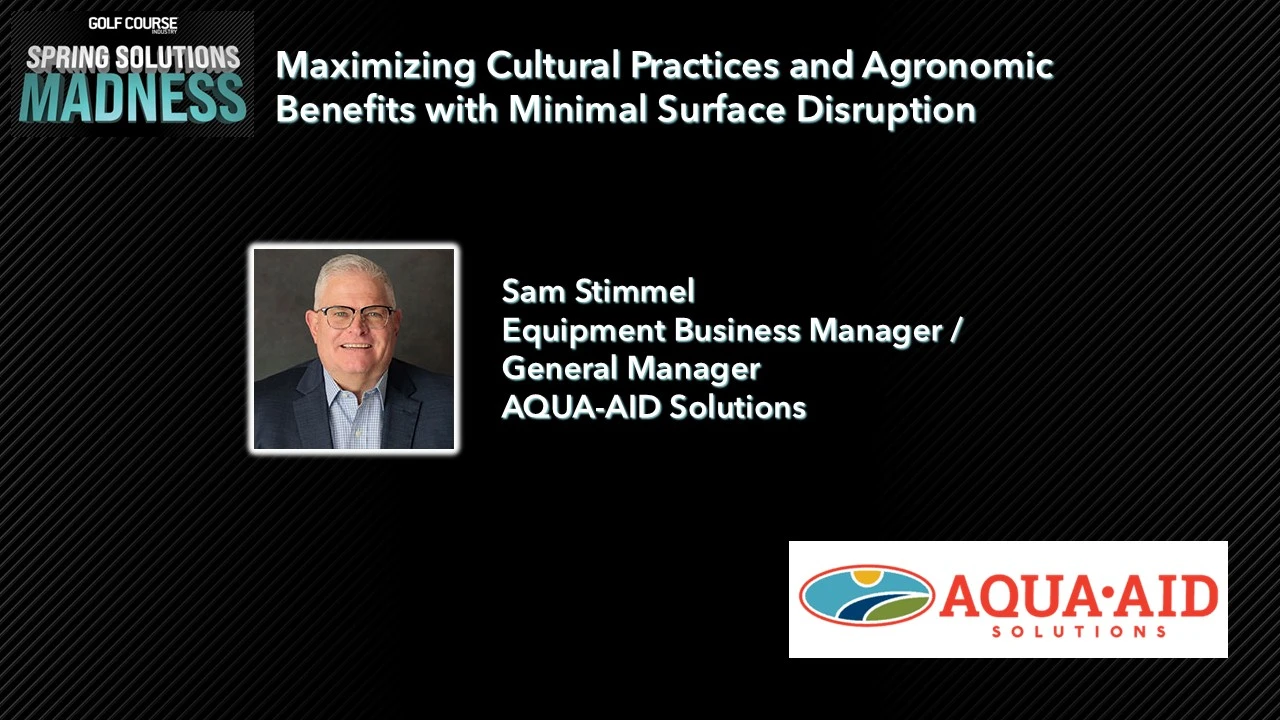These are anxious days and weeks for golf maintenance professionals. At least that’s how it always seems when August stretches into September. The summer crew has returned to school, customers continue filling tee sheets, high temperatures refuse to dip, superintendent jobs begin opening, and your favorite team played a Week 1 clunker.
September, in many ways, has become the new August. The stakes and temperatures remain high, respites remain rare.
Before doing something impulsive such as submitting a two-week notice or composing a social media tirade, consider the abundance of good happening within the game and industry.
Public golf is thriving
Spend any time at a public course lately? Hopefully so. Our Golf Course Industry team patronizes a slew of Northeast Ohio public courses, affectionately referring to each one as our “home course.” We’re blessed to have an abundance of well-maintained, architecturally interesting and affordable courses within a 40-mile radius of the headquarters.
We started noticing younger and newer faces at our golf hangouts beginning last spring. We’re spotting many of those same faces this year. Account manager Andrew Hatfield, a second-year golfer in his late 20s, and I started a round at 11 a.m. on a recent Sunday. The four groups playing before and after us were filled with millennial and Generation Z customers. Forty-one never felt so old on a golf course!
Data is matching our observations. The KemperSports Golfer Insights Survey, which queried 24,774 current, lapsed and new golfers, revealed that 27 percent of new golfers are 18-34. The industry experienced a net increase of 500,000 golfers and the number of female golfers increased by 8 percent to 6.1 million in 2020, according to the National Golf Foundation.
Where are these new golfers playing? Public facilities account for more than two-thirds of the U.S. golf supply and the number of rounds played at those facilities were up 25.8 percent through June compared to the same six-month stretch last year. Public golf had a solid 2020 financial performance, with 85 percent of facilities reporting they were profitable or broke even, according to our State of the Industry report.
The bridge to deeper golf experiences (translation: more individual spending on the game) appears reinforced.
The young women and men are good
Students helped solve summer labor conundrums at facilities of all levels. We only heard one gripe about them in our summer travels: they have to go back to school. In all seriousness, many younger employees are embracing tasks, asking the right questions, working well with others and recruiting classmates seeking summer work. Some have even approached their bosses about pursuing golf course maintenance as a career.
Market stabilization
Remember those misguided predictions last March about the possibility of “thousands” of golf courses potentially closing within a few years? Here’s the reality: only 60 U.S. golf courses closed in the first six months of 2021, a 46 percent drop from the first six months of 2020, according to the National Golf Foundation. The stabilization follows a 15-year period from 2006 to 2020 when 1,606 18-hole equivalents shuttered.
New products
There haven’t been this many new plant protectants entering the golf market at the same time in more than a decade. Pick a pest, disease or weed, and there’s a good chance a recently released chemistry will help control the potential problem. Innovation reduces potential turf issues. It also reduces the stress of the people responsible for staying ahead of those issues.

Explore the September 2021 Issue
Check out more from this issue and find your next story to read.
Latest from Golf Course Industry
- AQUA-AID Solutions bolsters Sunshine State presence
- Escalante Golf acquires secluded Illinois course
- Tartan Talks 105: Nathan Crace and Todd Quitno
- Disease Discussion 24: Let the turf talk to you
- From the publisher’s pen: Foggy intrigue
- USGA releases Water Conservation Playbook
- Vilamoura Golf courses awarded GEO Certified status
- GCSAA’s Health in Action 5K/2K reaches fundraising goal





